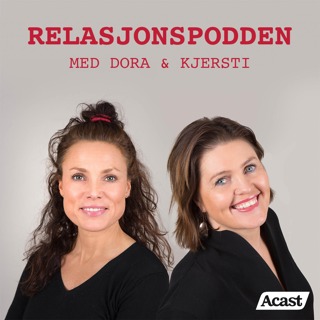
June 2021 Preview
After a year cooped inside, are you unsure how to start your summer? What if I told you that there was a podcast all about promoting new leisure skills, identifying reinforcers for adults, collaborating with other professionals, and learning new information as if by magic? Well, at least thematically, that’s just what we’ll be talking about all June on the show. Plus special guests Drs. Bryan Blair, Lesley Shawler, and Erin Michaud start their summer vacations with us. Toss on your sunglasses and join in! Articles for June 2021 Emergent Relations w/ Dr. Bryan Blair + Dr. Lesley Shawler Blair, B.J. & Shawler, L.A. (2020). Developing and implementing emergent responding training systems with available and low-cost computer-based learning tools: Some best practices and a tutorial. Behavior Analysis in Practice, 12, 509-520. doi: 10.1007/s40617-019-00405-x Blair, B.J., Shawler, L.A,, Albright, L.K., & Ferman, DM. (2021). An evaluation of the emergence of untrained academic and applied skills after instruction with video vignettes. The Analysis of Verbal Behavior. doi: 10.1007/s40616-020-00140-3 Blair, B.J., Tarbox, J., Albright, L., MacDonald, J.M., Shawler, L.A., Russo, S.R., & Dorsey, M.F. (2019). Using equivalence-based instruction to teach the visual analysis of graphs. Behavioral Interventions, 34, 405-418. doi: 10.1002/bin.1669 Brodsky, J. & Fienup, D.M. (2018). Sidman goes to college: A meta-analysis of equivalence-based instruction in higher education. Perspectives in Behavioral Science, 41, 95-119. doi: 10.1007/s40614-018-0150-0 Identifying Staff Reinforcers Cohen-Almeida, D., Graff, R.B., & Ahearn, W.H. (2000). A comparison of verbal and tangible stimulus preference assessments. Journal of Applied Behavior Analysis, 33, 329-334. doi: 10.1901/jaba.2000.33-329 Wilder, D.A., Wilson, P., Ellsworth, C., & Heering, P.W. (2003). A comparison of verbal and tangible stimulus preference assessment methods in adults with schizophrenia. Behavioral Interventions, 18, 191-198. doi: 10.1002/bin.136 Wilder, D.A., Rost, K., & McMahon, M. (2007). The accuracy of managerial prediction of employee preference: A brief report. Journal of Organizational Behavior Management, 27, 1-14. doi: 10.1300/J075v27n02_01 Waldvogel, J.M. & Dixon, M.R. (2008). Exploring the utility of preference assessments in organizational behavior management. Journal of Organizational Behavior Management, 28, 76-87. doi: 10.1080/01608060802006831 Slowiak, J.M. (2014). “How may I help you?” Improving telephone customer service in a medical clinic setting. Journal of Organizational Behavior Management, 34, 39-51. doi: 10.1080/01608061.2013.873382 Collaboration with Other Professionals w/ Dr. Erin Michaud Donaldson, A.L. & Stahmer, A.C. (2014). Team collaboration: The use of behavior principles for serving students with ASD. Language, Speech, and Hearing Services in Schools, 45, 261-276. doi: 10.1044/2014_LSHSS-14-0038 LaFrance, D.L., Weiss, M.J., Kazemi, E., Gerenser, J., & Dobres, J. (2019). Multidisciplinary teaming: Enhancing collaboration through increase understanding. Behavior Analysis in Practice, 12, 709-726. doi: 10.1007s40617-019-00331-y Brodhead, M.T. (2015). Maintaining professional relationships in an interdisciplinary setting: Strategies for navigating nonbehavioral treatment recommendations for individuals with autism. Behavior Analysis in Practice, 8, 70-78. doi: 10.1007/s40617-015-0042-7 Luiselli, J.K. (2015). In Response: Maintaining professional relationships in an interdisciplinary setting: Strategies for navigating non-behavioral treatment recommendations for individuals with autism. Behavior Analysis in Practice, 8, 79. doi: 10.1007/s40617-015-0043-6 Leisure Skills and Hobbies Jerome, J., Frantino, E.P., & Sturmey, P. (2007). The effects of errorless learning and backward chaining on the acquisition of internet skills in adults with developmental disabilities. Journal of Applied Behavior Analysis, 40, 185-189. doi: 10.1901/jaba.2007.41-06 Blum-Dimaya, A., Reeve, S.A., Reeve, K.F., & Hoch, H. (2010). Teaching children with autism to play a video game using activity schedules and game-embedded simultaneous video modeling. Education and Treatment of Children, 33, 351-370. doi: 10.1177/1088357615583469 Edrisinha, C., O’Reilly, M.F., Choi, H.Y., Sigafoos, J., & Lancioni, G.E. (2011). “Say cheese”: Teaching photography skills to adults with developmental disabilities. Research in Developmental Disabilities, 32, 636-642. doi: 10.1016/j.ridd.2010.12.006 Tullis, C.A. & Seaman-Tullis, R.L. (2019). Incorporating preference assessment into transition planning for people with autism spectrum disorder. Behavior Analysis in Practice, 12, 727-733. doi: 10.1007/s40617-019-00353-6
2 Jun 202126min

Episode 167 - Bullying
Hey, ABA Inside Track, I thought I told you not to podcast in here no more. Hey, did you record that episode on research on bullying behavior? You took notes on a meta-analysis of current bullying prevention programs and single-subject research looking closer at specific programs in behavior analysis, including a program for individuals with disabilities? Think, ABA Inside Track, think! If you put out an episode detailing effective treatment for decreasing bullying behavior and improving victimization outcomes, I’ll be out of a job, and you wouldn’t want that to happen, woudja? Wouldja? This episode is available for 1.0 LEARNING CEU. Articles discussed this episode: Gaffney, H., Farrington, D.P., & Ttofi, M.M. (2019). Examining the effectiveness of school-bullying intervention programs globally: A meta-analysis. International Journal of Bullying Prevention, 1, 14-31. doi: 10.1007/s42380-019-0007-4 Gaffney, H., Ttofi, M.M., & Farrington, D.P. (2019). Evaluating the effectiveness of school-bullying prevention programs: An updated meta-analytical review. Aggression and Violent Behavior, 45, 111-133. doi: 10.1016/j.avb.2018.07.001 Gaffney, H., Ttofi, M.M., & Farrington, D.P. (2021). What works in anti-bullying programs? Analysis of effective intervention components. Journal of School Psychology, 85, 37-56. doi: 10.1016/j.jsp.2020.12.002 Ross, S.W. & Horner, R.H. (2009). Bully prevention in positive behavior support. Journal of Applied Behavior Analysis, 42, 747-759. doi: 10.1901/jaba.2009.42-747 Stannis, R.L., Crosland, K.A., Miltenberger, R., & Valbuena, D. (2019). Response to bullying (RTB): Behavioral skills and in situ training for individuals diagnosed with intellectual disabilities. Journal of Applied Behavior Analysis, 52, 73-83. doi: 10.1002/jaba.501 If you're interested in ordering CEs for listening to this episode, click here to go to the store page. You'll need to enter your name, BCBA #, and the two episode secret code words to complete the purchase. Email us at abainsidetrack@gmail.com for further assistance.
26 Mai 20211h 16min

Episode 166 - The History and Evolution of the Functional Analysis w/ Dr. Jessica Slaton
And yea, the functional analysis sprung from the head of Iwata et al. And the results were good. Fast forward a few decades and researchers are still exploring the limits of this game changing assessment tool, finding ways for BCBAs to conduct safer and faster procedures. And to sum up some recent touchstone moments in this journey, we’re joined by researcher and FA history expert, Dr. Jessica Slaton to look at 40 year…and beyond! This episode is available for 1.0 LEARNING CEU. Articles discussed this episode: Smith, R.G. & Churchill, R.M. (2002). Identification of environmental determinants of behavior disorders through functional analysis of precursor behaviors. Journal of Applied Behavior Analysis, 35, 125-136. doi: 10.1901/jaba.2002.35-125 Thomason-Sassi, J.L., Iwata, B.A., Neidert, P.L., & Roscoe, E.M. (2011). Response latency as an index of response strength during functional analyses of problem behavior. Journal of Applied Behavior Analysis, 44, 51-67. doi: 10.1901/jaba.2011.44-51 Slaton, J.D. & Hanley, G.P. (2018). Nature and scope of synthesis in functional analysis and treatment of problem behavior. Journal of Applied Behavior Analysis, 51, 943-973. doi: 10.1002/jaba.498 Warner, C.A., Hanley, G.P., Landa, R.K., Ruppel, K.W., Rajaraman, A., Ghaemmaghami, M., Slaton, J.D., & Gover, H.C. (2020). Toward accurate inferences of response class membership. Journal of Applied Behavior Analysis, 53, 331-354. doi: 10.1002/jaba.598 If you're interested in ordering CEs for listening to this episode, click here to go to the store page. You'll need to enter your name, BCBA #, and the two episode secret code words to complete the purchase. Email us at abainsidetrack@gmail.com for further assistance.
19 Mai 20211h 27min

Episode 165 - Quality of Life
Unlike mercy, our quality of life does NOT droppeth as the gentle rain from heaven. Instead, our perception of how well (or not) our lives are is based on a number of factors relating to job satisfaction, social relationships, and physical wellbeing. Or so we thought. Turns out, all measures of quality of life may not be created equally, especially for autistic individuals. This week, we hit the research journals to identify what does and doesn’t matter in improving quality of life (and, what research still has to find out!). This episode is available for 1.0 LEARNING CEU. Articles discussed this episode: Bernhardt, J.B., Larn, G.Y.H., Thomas, T., Cubells, J.F., Bohlke, K. Reid, M., & Rice, C.E. (2020). Meaning in measurement: Evaluating young autistic adults’ active engagement and expressed interest in quality-of-life goals. Ausitm in Adulthood, 2, 227-242. doi: 10.1089/aut.2019.0081 Burgess, A.F. & Gutstein, S.E. (2007). Quality of life for people with autism: Raising the standard for evaluating successful outcomes. Child and Adolescent Mental Health, 12, 80-86. doi: 10.1111/j.1475-3588.2006.00432.x Ayres, M., Parr, JR., Rodgers, J., Mason, D., Avery ,L., & Flynn, D. (2017). A systematic review of quality of life of adults on the autism spectrum. Autism, 22, 774-783. doi: 10.1177/1362361317714988 If you're interested in ordering CEs for listening to this episode, click here to go to the store page. You'll need to enter your name, BCBA #, and the two episode secret code words to complete the purchase. Email us at abainsidetrack@gmail.com for further assistance.
12 Mai 20211h 15min

May 2021 Preview
We were walking through the park today, because it’s the Merry Merry Month of May! And, who should we run into but our book club pal, Alan, to ring in the new topics we’ll be discussing this month. After reminiscing on the fun of discussing Neurotribes, we look forward to our episodes on quality of life, bullying, and the evolution of the functional analysis with Dr. Jessica Slaton. We’re about as funny as a screen door on a battleship. Articles for May 2021 Quality of Life Bernhardt, J.B., Larn, G.Y.H., Thomas, T., Cubells, J.F., Bohlke, K. Reid, M., & Rice, C.E. (2020). Meaning in measurement: Evaluating young autistic adults’ active engagement and expressed interest in quality-of-life goals. Ausitm in Adulthood, 2, 227-242. doi: 10.1089/aut.2019.0081 Burgess, A.F. & Gutstein, S.E. (2007). Quality of life for people with autism: Raising the standard for evaluating successful outcomes. Child and Adolescent Mental Health, 12, 80-86. doi: 10.1111/j.1475-3588.2006.00432.x Ayres, M., Parr, JR., Rodgers, J., Mason, D., Avery ,L., & Flynn, D. (2017). A systematic review of quality of life of adults on the autism spectrum. Autism, 22, 774-783. doi: 10.1177/1362361317714988 The History and Evolution of Functional Analysis w/ Dr. Jessica Slaton Smith, R.G. & Churchill, R.M. (2002). Identification of environmental determinants of behavior disorders through functional analysis of precursor behaviors. Journal of Applied Behavior Analysis, 35, 125-136. doi: 10.1901/jaba.2002.35-125 Thomason-Sassi, J.L., Iwata, B.A., Neidert, P.L., & Roscoe, E.M. (2011). Response latency as an index of response strength during functional analyses of problem behavior. Journal of Applied Behavior Analysis, 44, 51-67. doi: 10.1901/jaba.2011.44-51 Slaton, J.D. & Hanley, G.P. (2018). Nature and scope of synthesis in functional analysis and treatment of problem behavior. Journal of Applied Behavior Analysis, 51, 943-973. doi: 10.1002/jaba.498 Warner, C.A., Hanley, G.P., Landa, R.K., Ruppel, K.W., Rajaraman, A., Ghaemmaghami, M., Slaton, J.D., & Gover, H.C. (2020). Toward accurate inferences of response class membership. Journal of Applied Behavior Analysis, 53, 331-354. doi: 10.1002/jaba.598 Bullying Gaffney, H., Farrington, D.P., & Ttofi, M.M. (2019). Examining the effectiveness of school-bullying intervention programs globally: A meta-analysis. International Journal of Bullying Prevention, 1, 14-31. doi: 10.1007/s42380-019-0007-4 Gaffney, H., Ttofi, M.M., & Farrington, D.P. (2019). Evaluating the effectiveness of school-bullying prevention programs: An updated meta-analytical review. Aggression and Violent Behavior, 45, 111-133. doi: 10.1016/j.avb.2018.07.001 Gaffney, H., Ttofi, M.M., & Farrington, D.P. (2021). What works in anti-bullying programs? Analysis of effective intervention components. Journal of School Psychology, 85, 37-56. doi: 10.1016/j.jsp.2020.12.002 Ross, S.W. & Horner, R.H. (2009). Bully prevention in positive behavior support. Journal of Applied Behavior Analysis, 42, 747-759. doi: 10.1901/jaba.2009.42-747 Stannis, R.L., Crosland, K.A., Miltenberger, R., & Valbuena, D. (2019). Response to bullying (RTB): Behavioral skills and in situ training for individuals diagnosed with intellectual disabilities. Journal of Applied Behavior Analysis, 52, 73-83. doi: 10.1002/jaba.501
5 Mai 202124min

Episode 164 - Grab Bag XI??
Got any behavior analytic research? Plenty! And good as only ABA Inside Track could discuss ‘em. Special sweet articles, spicy with bits of behavioral technologies like preference assessments, functional analyses, and plain ones like pre-post test designs that graph up all crunchy. Hard to choose which one to discuss first. That’s some problem. You try ‘em! Behavior analytic research reviews as only ABA Inside Track could discuss ‘em. ‘Cause ABA Inside Track remembers. This episode is available for 1.0 LEARNING CEU. NOTE: If you're looking for the 2nd code word, please redownload the file. Had to make some last-minute edits. Apologies to earlier listeners. Articles discussed this episode: Clayton, M. & Shrock, T. (2020). Making a tiger’s day: Free-operant assessment and environmental enrichment to improve the daily lives of captive Bengal tigers (Panthera tigris tigris). Behavior Analysis in Practice, 13, 883-893. doi: 10.1007/s40617-020-00478-z Cengher, M., Clayborne, J.C., & O’Connor, J.T. (2020). Assessment and treatment of escape from attention in the form of conversation. Behavioral Interventions, 36, 21-39. doi: 10.1002/bin.1754 Machado, M.A. & Luczynski, K.C. (2021). Computer-based training to teach observers to accurately score problem behavior using fast forwarding at 5x normal speed. Journal of Applied Behavior Analysis, 54, 417-428. doi: 10.1002/jaba.783 If you're interested in ordering CEs for listening to this episode, click here to go to the store page. You'll need to enter your name, BCBA #, and the two episode secret code words to complete the purchase. Email us at abainsidetrack@gmail.com for further assistance.
28 Apr 20211h 17min

Episode 163 - LGBTQIA+ Diversity w/ Camille Morgan
This week Camille Morgan, host of the Love, Sex, and ABA podcast, joins us to talk…well, love, sex, and ABA. Specifically we discussed the long and continuing work of the civil rights movement, what verbal behavior and ACT can add to the work of black liberation, and how these conversations relate to equal rights for the LGBTQIA+ community. This episode is available for 1.0 LEARNING CEU. Articles discussed this episode: King, Jr., M.L. (1968). The role of the behavioral scientist in the civil rights movement. Journal of Social Issues, 24, 1-12. doi: 10.1111/j.1540-4560.1968.tb01465.x Gingles, D. (2021). Igniting collective freedom: An integrative behavioral model of acceptance and commitment towards black liberation. doi: 10.31234/osf.io/sk7jh If you're interested in ordering CEs for listening to this episode, click here to go to the store page. You'll need to enter your name, BCBA #, and the two episode secret code words to complete the purchase. Email us at abainsidetrack@gmail.com for further assistance.
21 Apr 20211h 21min

Episode 162 - Tummy Time
Going way back to our very first episode, we’re talking all about tummy time. You know, that fun activity where you put a baby on its stomach to strengthen muscles and minimize the risk of getting a flat head. The one that makes most babies cry hysterically. Now research is here to inform how we can promote this very necessary activity without all the tears. Don’t shell out your hard-earned cash on a tummy time play mat until you’ve listened to this episode! This episode is available for 1.0 LEARNING CEU. Articles discussed this episode: Boutot, E.A. & DiGangi, S.A. (2018). Effects of activation of preferred stimulus on tummy time behavior of an infant with Down syndrome and associated hypotonia. Behavior Analysis in Practice, 11, 144-147. doi: 10.1007/s40617-018-0212-5 Morea, A. & Jessel, J. (2020). Comparing the effects of varied and constant preferred items on improving tummy time for typically developing infants. Journal of Applied Behavior Analysis, 53, 1367-1382. doi: 10.1002/jaba.684 Mendres-Smith, A.E., Borrero, J.C., Castillo, M.I., Davis, B.J., Becraft, J.L., & Hussey-Gardner, B. (2020). Tummy time without the tears: The impact of parent positioning and play. Journal of Applied Behavior Analysis, 53, 2090-2107. doi: 10.1002/jaba.715 If you're interested in ordering CEs for listening to this episode, click here to go to the store page. You'll need to enter your name, BCBA #, and the two episode secret code words to complete the purchase. Email us at abainsidetrack@gmail.com for further assistance.
14 Apr 20211h 14min






















